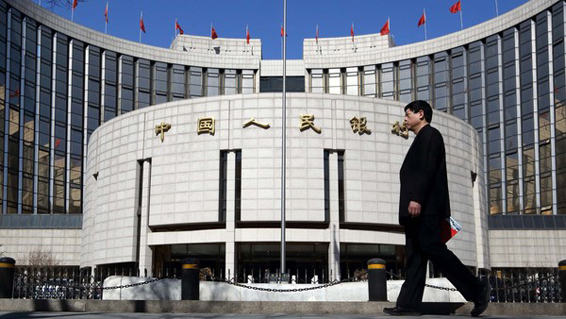Dangers of 'excessive financialization' in Chinese economy
- By Zhang Chengsi
 0 Comment(s)
0 Comment(s) Print
Print E-mail China.org.cn, January 1, 2016
E-mail China.org.cn, January 1, 2016
|
|
|
The People's Bank of China issued a notice in October expanding a pilot program on credit-asset pledged lending to nine more municipalities and provinces. |
The People's Bank of China issued a notice in October expanding a pilot program on credit-asset pledged lending to nine more municipalities and provinces.
The action was interpreted by some as promoting liquidity by as much as 7 trillion yuan, even as China's quantitative easing (QE). Though the effects are yet to be seen, the truth is China has indeed implemented QE to offset economic slowdown.
This, however, has brought problems such as inflationary pressure and an overflow of money into the non-real economy. Worse still, it's another demonstration of a trend towards excessive financialization.
Financialization runs amok
Excessive financialization means excessive growth of the financial industry and financial assets, rather than the non-financial sector and assets; profits of non-financial enterprises, therefore, rely increasingly on financial returns rather production and trade of goods.
Since the 1980s, financialization has grown worldwide. In the 19th century, the industrial sector overtook agriculture to become the world economic pillar, in turn, the industrial sector passed the baton to the financial industry in the 1980s. For instance, the overall financial assets of the United States were 4.52 times greater than the nominal GDP in 1952; within 56 years, that is to 2008, financial assets climbed 97-fold, registering much faster growth than the real economy.
Just a few years ago, the financial industry was believed to be able to facilitate economic growth, boost entrepreneurship, and mitigate poverty and inequality. However, that belief has been challenged in recent years, especially after the 2008 global financial crisis, which some scholars blame in part on overheated financialization.
The scale of the financial industry is often measured by combining finance, insurance and real estate industry (FIRE). The contribution of the FIRE industries to American GDP increased from 16 percent in 1980 to more than 20 percent in 2007, while the contribution of manufacturing industry dropped from 20 to 12 percent.







Go to Forum >>0 Comment(s)